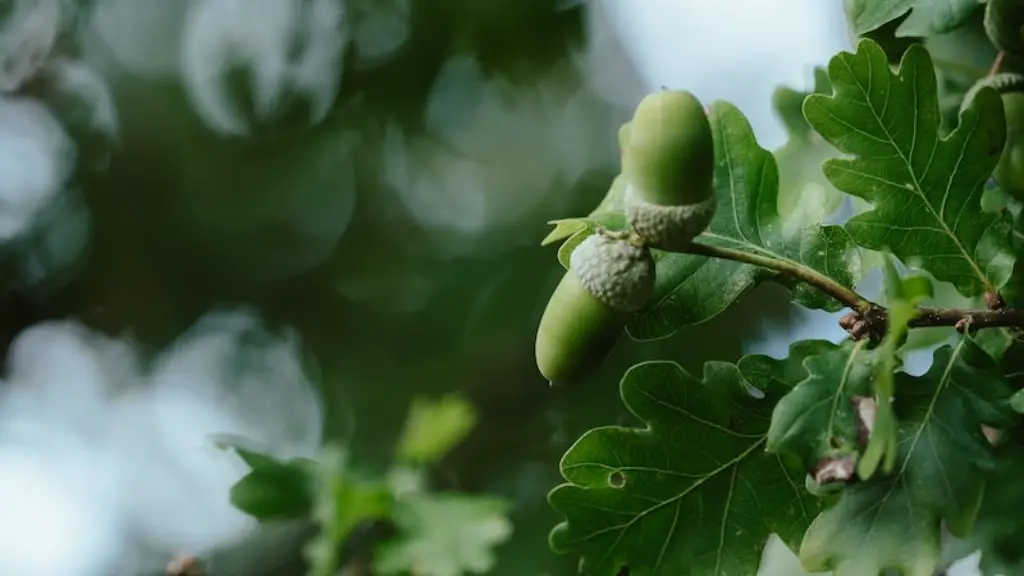Background Information
Avocado is a popular fruit, commonly grown in tropical climates. Although it’s possible to grow an avocado tree from a seed, it’s not always a successful process. Depending on the environment, it can take up to 3 years before the tree starts producing fruit. The key to success is patience and careful attention to the environment and care requirements of the tree.
Collecting and Preparing the Seed for Planting
The first step in growing an avocado tree from a seed is to collect a ripe avocado from the tree. You need to check the fruit for any signs of bruising or discoloration, as these can indicate an underlying problem. Once you’ve selected your avocado, carefully remove the seed from the fruit, being mindful not to damage it. The seed needs to be scarified before planting. This is done by gently scraping the seed coat with a sharp knife in order to break it down and allow water to penetrate.
Planting the Seed
Once the seed is scarified, you can start planting. Select a container with good drainage and fill with potting soil. Make a shallow indent in the soil and carefully place the seed in the center. Cover the seed with soil, but leave the seed exposed on the surface. Then, gently water the container and place in an area with filtered sunlight.
Maintaining the Environment and Care Requirements
For an avocado tree to grow successfully, it needs a warm but not overly hot climate. The temperature should range between 15-22 degrees Celcius for optimal growth. It also needs dappled or filtered light during the day. You should water the container regularly, making sure the soil is always slightly damp but not soaking wet.
Fertilizer
Avocado trees require regular fertilizing, especially during their early stages of growth. You should use a balanced liquid fertilizer that is specific for fruit trees. This should be applied every few weeks, taking into account the manufacturer’s instructions for the measurement and timing of application.
Pruning
When the tree begins to grow, you should prune off any dead or weak branches to prevent them from taking nutrients away from the strong, healthy ones. Pruning should be done carefully and with a sharp, clean knife.
Harvesting the Fruit
Avocado trees that have been successfully grown from a seed usually take around 3-5 years to begin producing fruit. The fruit should be picked when it just starts to turn slightly brown and yield to gentle pressure. Once ripe, the fruit should be picked and enjoyed right away or kept in the refrigerator for later use.
Additional Considerations
Avocado trees need a warm and humid environment to survive and thrive. If you are planting the seed in a cooler area or lowland, you should cover the tree with a blanket or burlap to protect it from frost and other adverse weather conditions. Lastly, you should be mindful of pests such as snails and rats that may try to eat the leaves and fruit.
Understanding Avocado Tree Varieties
Avocado trees come in many varieties, from the heart-shaped Hass variety to the larger, smooth-skinned Pinkerton. Knowing what variety you have is important to determine the planting, environmental and care requirements necessary for optimal growth. If you don’t know the variety, you can take a sample of the seed or fruit to a local nursery for assistance.
Transplantation
Once the avocado tree has been growing for a few years, it may need to be transplanted in order to encourage further growth. This should be done before the tree grows too large for the pot. You will need to transfer the soil and root system from the pot to the ground, or to a larger pot.
Developing the Propagation Method Ground
Although growing an avocado tree from a seed is not always successful, it can be done with the right environment, patience and care. Each time you plant a seed and set up the right conditions, you have a chance of growing and harvesting your own avocados. If successful, the reward of a homegrown avocado tree is worth the effort.
Protecting the Tree
When your avocado tree is growing, it will need to be protected from insect infestations. To do this, you should use organic pest control methods such as neem oil spray, or a mixture of soapy water and dish detergent. You should also inspect the tree frequently to check for any signs of disease.
Mulching the Tree
Mulching is an important part of maintaining an avocado tree’s health. Mulch will prevent weeds from growing, help to retain moisture in the soil and prevent the roots from becoming too dry. It also adds organic matter to the soil, which helps the tree to obtain the nutrients it needs.
Irrigation
In order to keep the tree healthy, it needs to be watered regularly. You should water the tree deeply, allowing the water to run through the entire root system. On hot days, it may be necessary to water the tree multiple times in order to prevent the soil from becoming too dry.
Repotting
When your tree has outgrown the pot it is currently in, it is time to repot it. To repot, the tree should be carefully removed from the pot and the roots trimmed away. The tree should then be placed in a larger pot with fresh, well-draining soil.
Identifying Nutrient Deficiencies
If your avocado tree is not growing as expected, it may be suffering from nutrient deficiencies. To determine the cause, you should take a sample of the soil to your local nursery for analysis. If nutrient deficiencies are detected, you should apply the appropriate fertilizer to restore the tree’s health.



